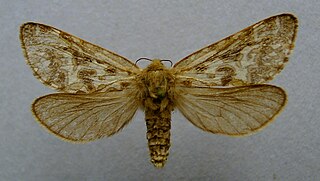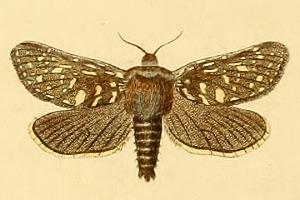Geopolitics is the study of the effects of Earth's geography on politics and international relations. While geopolitics usually refers to countries and relations between them, it may also focus on two other kinds of states: de facto independent states with limited international recognition and relations between sub-national geopolitical entities, such as the federated states that make up a federation, confederation or a quasi-federal system.

In architecture, a corbel is a structural piece of stone, wood or metal jutting from a wall to carry a superincumbent weight, a type of bracket. A corbel is a solid piece of material in the wall, whereas a console is a piece applied to the structure. A piece of timber projecting in the same way was called a "tassel" or a "bragger" in England.

Alopecurus, or foxtail grass, is a common and widespread genus of plants in the grass family. It is common across temperate and subtropical parts of Eurasia, northern Africa, and the Americas, as well as naturalized in Australia and on various islands.

Anthriscus (chervils) is a common plant genus of the family Apiaceae, growing in Europe and temperate parts of Asia. It comprises 15 species. The genus grows in meadows and verges on slightly wet porous soils. One species, Anthriscus cerefolium is cultivated and used in the kitchen to flavor foods.

The Hepialidae are a family of insects in the lepidopteran order. Moths of this family are often referred to as swift moths or ghost moths.

Gazoryctra is a genus of moths of the family Hepialidae. There are 14 described species found in Eurasia, Canada and the United States.

Phymatopus is a genus of moths of the family Hepialidae, which consists of around 500 species and 30 genera. The genus was erected by Hans Daniel Johan Wallengren in 1869. They can be found across Eurasia and North America. Species can be distinguished by the different morphology of male genitalia and different forewing patterns, which vary in stripe colour and size and arrangement of spots. The stripes themselves consist of spots separated by dark veins which are fringed by thin black lines from both inner and outer sides.

Triodia is a genus of moths of the family Hepialidae. There are seven described species found in northern and western Eurasia.

Koeleria is a common and widespread genus of plants in the grass family, found on all continents except Antarctica and on various oceanic islands. It includes species known generally as Junegrasses.

Mare Nostrum was a Roman name for the Mediterranean Sea. In Classical Latin, it would have been pronounced [ˈma.rɛ ˈnɔs.t̪rʊ̃mˑ], and in Ecclesiastical Latin, it is pronounced [ˈmaː.rɛ ˈnɔs.t̪rum].

The map-winged swift is a moth belonging to the family Hepialidae. The species was first described by Charles De Geer in 1778. It has a patchy distribution throughout Eurasia. It was previously placed in the genus Hepialus and some references still place it there.

Eurasia is the largest continental area on Earth, comprising all of Europe and Asia. Primarily in the Northern and Eastern Hemispheres, it is bordered by the Atlantic Ocean to the west, the Pacific Ocean to the east, the Arctic Ocean to the north, and by Africa, the Mediterranean Sea, and the Indian Ocean to the south. The division between Europe and Asia as two continents is a historical social construct, as they have no clear physical separation between them; thus, in some parts of the world, Eurasia is recognized as the largest of the six, five, or four continents on Earth. In geology, Eurasia is often considered as a single rigid megablock. However, the rigidity of Eurasia is debated based on paleomagnetic data.

Pharmacis carna is a moth of the family Hepialidae. It is mainly found in mountainous areas, mostly in the Alps and the Carpathian Mountains, although it is also present in Hungary.

Gazoryctra ganna is a moth of the family Hepialidae. It is found in Sweden, Finland, Russia (Siberia), France, Switzerland, Austria, Italy and Kazakhstan.

Pharmacis aemilianus is a moth of the family Hepialidae. It is known from Italy.
Pharmacis anselminae is a moth of the family Hepialidae. It is known from Italy.
Pharmacis bertrandi is a moth of the family Hepialidae. It is known from France and Italy.
Pharmacis castillanus is a moth of the family Hepialidae. It is known from Spain.
Pharmacis claudiae is a moth of the family Hepialidae. It is known from Italy.

Pharmacis pyrenaicus is a moth of the family Hepialidae. It is known from France and Spain.
This page is based on this
Wikipedia article Text is available under the
CC BY-SA 4.0 license; additional terms may apply.
Images, videos and audio are available under their respective licenses.













